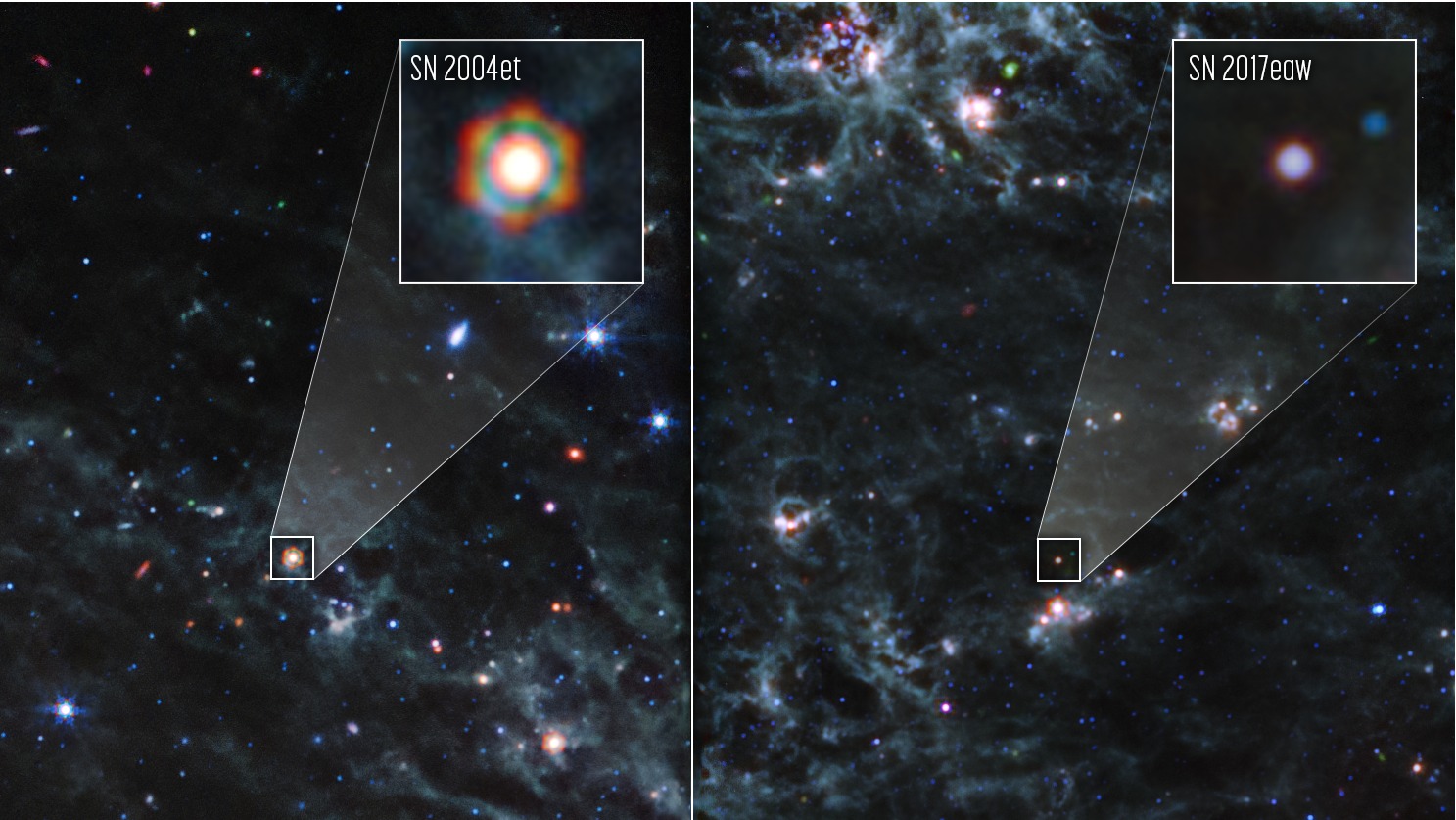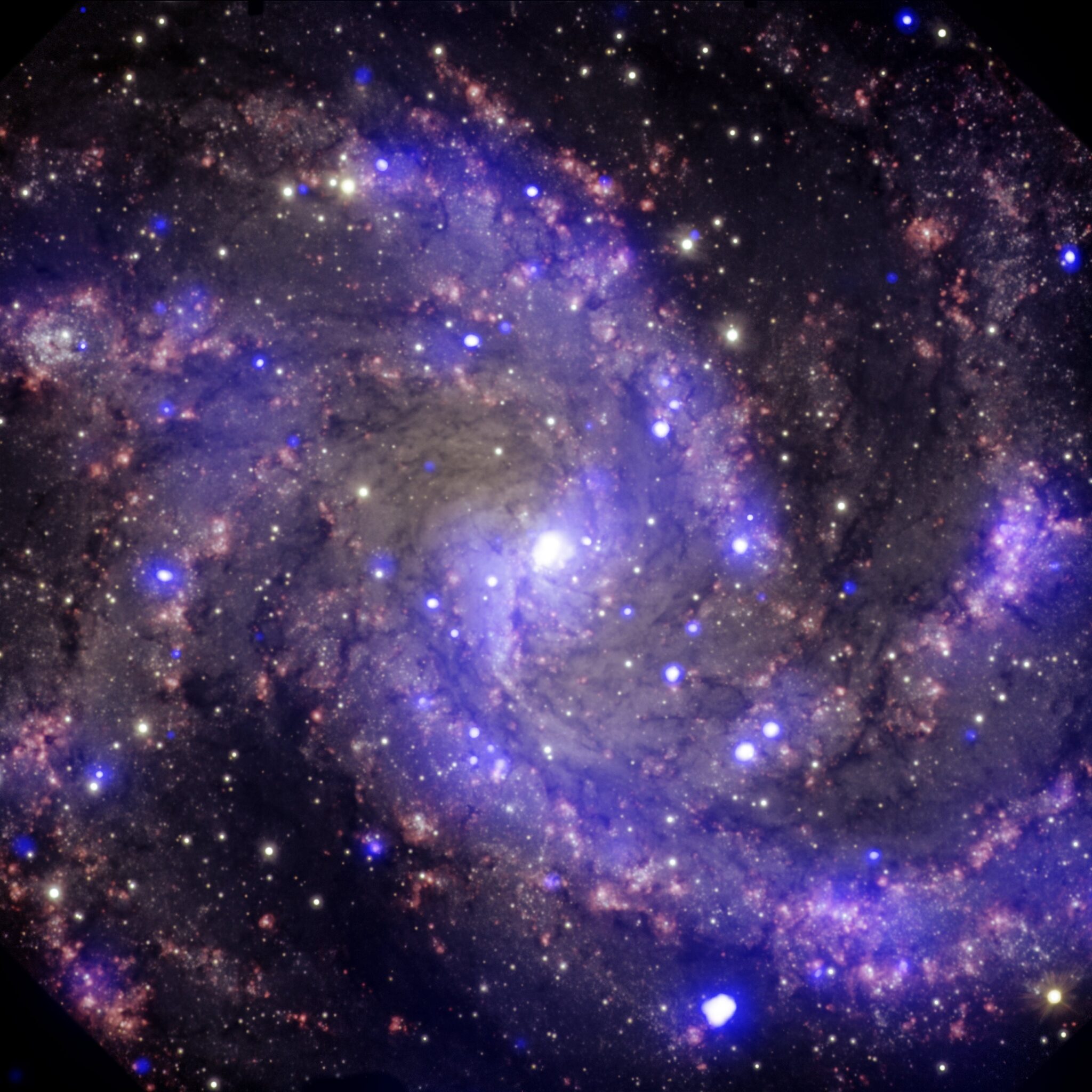Two supernovae at a distance of 22 million light-years from us threw dust into the area around them. Observations of the James Webb Space Telescope have shown how new star systems are born after the death of stars. The observed supernovae — SN 2004et and SN 2017eaw — are located in the galaxy NGC 6946, which is also called Fireworks. JWST photographed these two objects with its MIRI mid-infrared instrument.

Bright Star Deaths
Supernovae are bright stellar deaths. When some stars die, they explode outward, scattering their matter across space. It is known that supernovae emit dust into space during an explosion. But previously, it was difficult for astronomers to directly link the dust from the death of stars with dust that could contribute to the formation of new stars.
“Direct evidence of this phenomenon has been slim up to this point, with our capabilities only allowing us to study the dust population in one relatively nearby supernova to date – Supernova 1987A, 170,000 light-years away from Earth. When the gas cools enough to form dust, that dust is only detectable at mid-infrared wavelengths provided you have enough sensitivity,” said Melissa Shahbandeh, an astronomer at Johns Hopkins University and the Space Telescope Science Institute, lead author of the new study.
The largest mass of dust
The wavelengths at which James Webb operates allow it to penetrate interstellar gas and dust, revealing intimate cosmic events such as star formation. But the telescope’s sensitive instruments can detect dust that can only be seen in the mid-infrared range.

The research team found a lot of dust around supernovae. Only in SN 2004et, so much of it was discovered that it would be possible to form 5 thousand Earth-sized planets. This is the largest mass of dust detected in supernovae since SN 1987A, discovered in 1987.
Are supernovae dust factories?
Dying and dead stars are one of James Webb’s favorite targets. In March, it photographed the Wolf–Rayet star; it is rapidly losing mass, but has not yet become a supernova. And when JWST observations are combined with observations from other telescopes, such as Hubble and the Chandra X-ray Observatory, astronomers can make extended surveys of the cosmos.
The two dusty supernovae recently photographed by the telescope are the first of five objects included in the GO 2666 scientific program called “Are Supernovae Dust Factories?“. The first two objects seem to indicate that yes, and the three remaining ones may further clarify this issue.
Earlier we reported on how James Webb found the basis for complex organics in the protoplanetary disk.
According to STScI.
Follow us on Twitter to get the most interesting space news in time
https://twitter.com/ust_magazine
